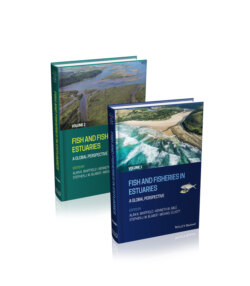Читать книгу Fish and Fisheries in Estuaries - Группа авторов - Страница 62
Stage durations
ОглавлениеVariability in growth rates translates into variability in larval‐stage durations, with longer durations generally occurring in colder estuarine ecosystems. Egg and larval‐stage durations are variable, perhaps more so in estuarine fishes than in species from ocean habitats, owing to effects of weather, especially temperature, precipitation and freshwater flow variabilities that can quickly alter an estuary's water quality and potential to support production of early‐life stages of fishes. The stage‐duration hypothesis (Cushing 1975, Anderson 1988) indicates that fast growth and short stage durations during early life are associated with higher recruitment potential. In many, but not all cases, shorter stage durations are linked to higher survival and, ultimately, higher recruitment (Leggett & Frank 2008, Houde 2016).
Duration of the larval stage differs amongst species and is dependent on growth rate. For example, in the moronid Morone saxatilis, early‐larval‐stage duration (at 8 mm TL) in Chesapeake Bay ranged from 13 to >40 days, an effect primarily attributable to temperature on growth rates (Rutherford & Houde 1995). In laboratory experiments on larval pleuronectiforms, 9–25 mm Paralichthys dentatus and Pseudopleuronectes americanus were highly vulnerable to predation by Crangon septumspinosa shrimp, suggesting that stage duration of newly settled individuals in that length range, and not only the daily mortality imposed by the predator, could have a substantial effect on cumulative mortality and recruitment (Witting & Able 1993).
Across taxa, stage durations (D) of estuarine fish larvae decline rapidly and non‐linearly with respect to increasing temperature (Houde & Zastrow 1993): D = 462.28T −0.85. For typical, estuary‐associated taxa, reported larval‐stage durations range from at least 19 to 100 days (Houde & Zastrow 1993). Temperature and prey availability are the two factors contributing most to variability in stage duration (Blaxter 1992, Houde & Zastrow 1993). Those factors may control recruitment levels through effects on the cumulative mortality during variable larval‐stage durations (Cushing 1975, Houde 1987, 1997a, Anderson 1988, Pepin & Myers 1991).
Mortality rates usually decline as larvae transition to juveniles, but juvenile stage durations typically are longer than larval‐stage durations (Houde 1997b, 2002). Juveniles of some exploited estuarine fishes may spend months or years in a pre‐recruit stage, providing ample time to incur variable cumulative mortalities that can significantly tune or regulate levels of recruitment.
